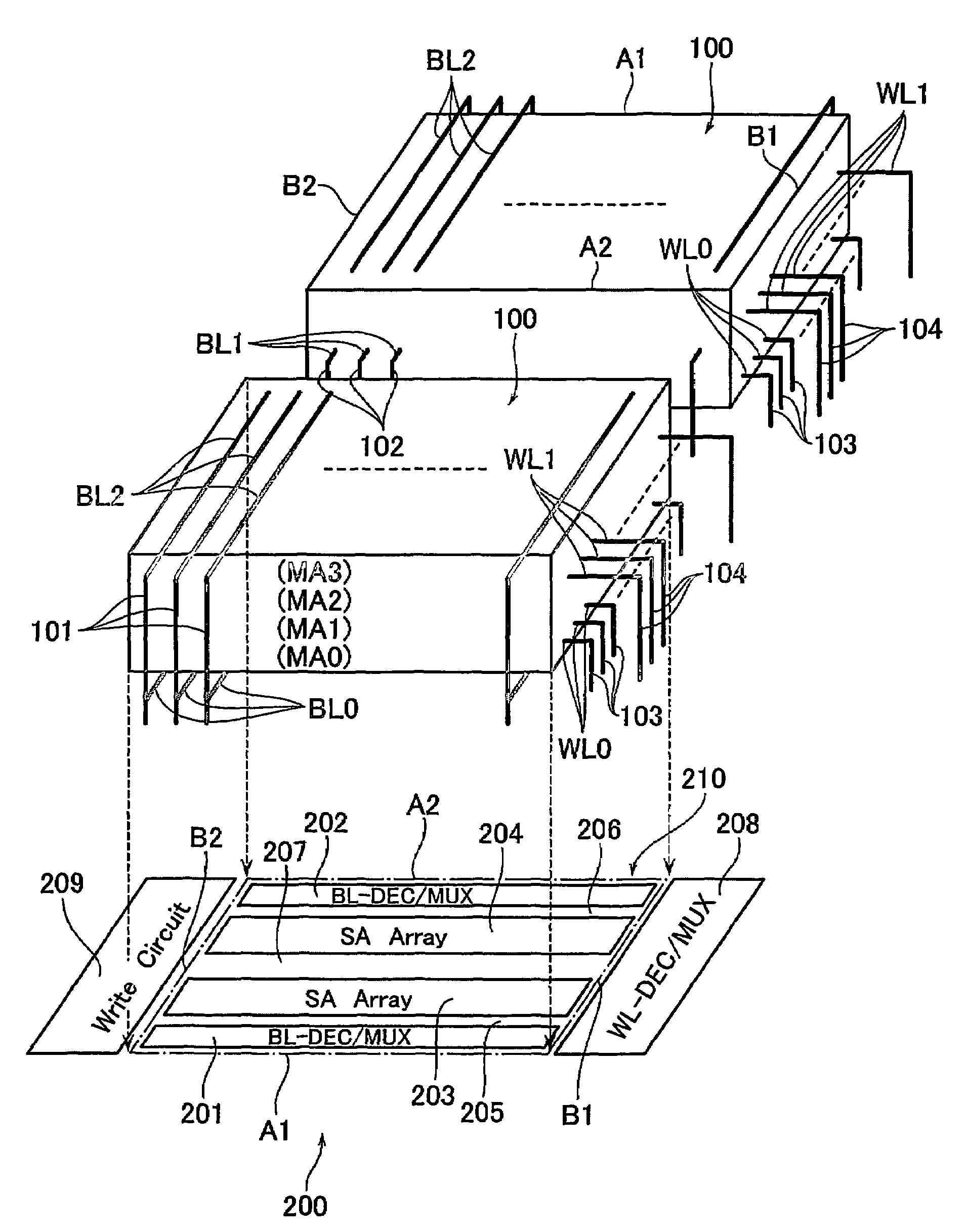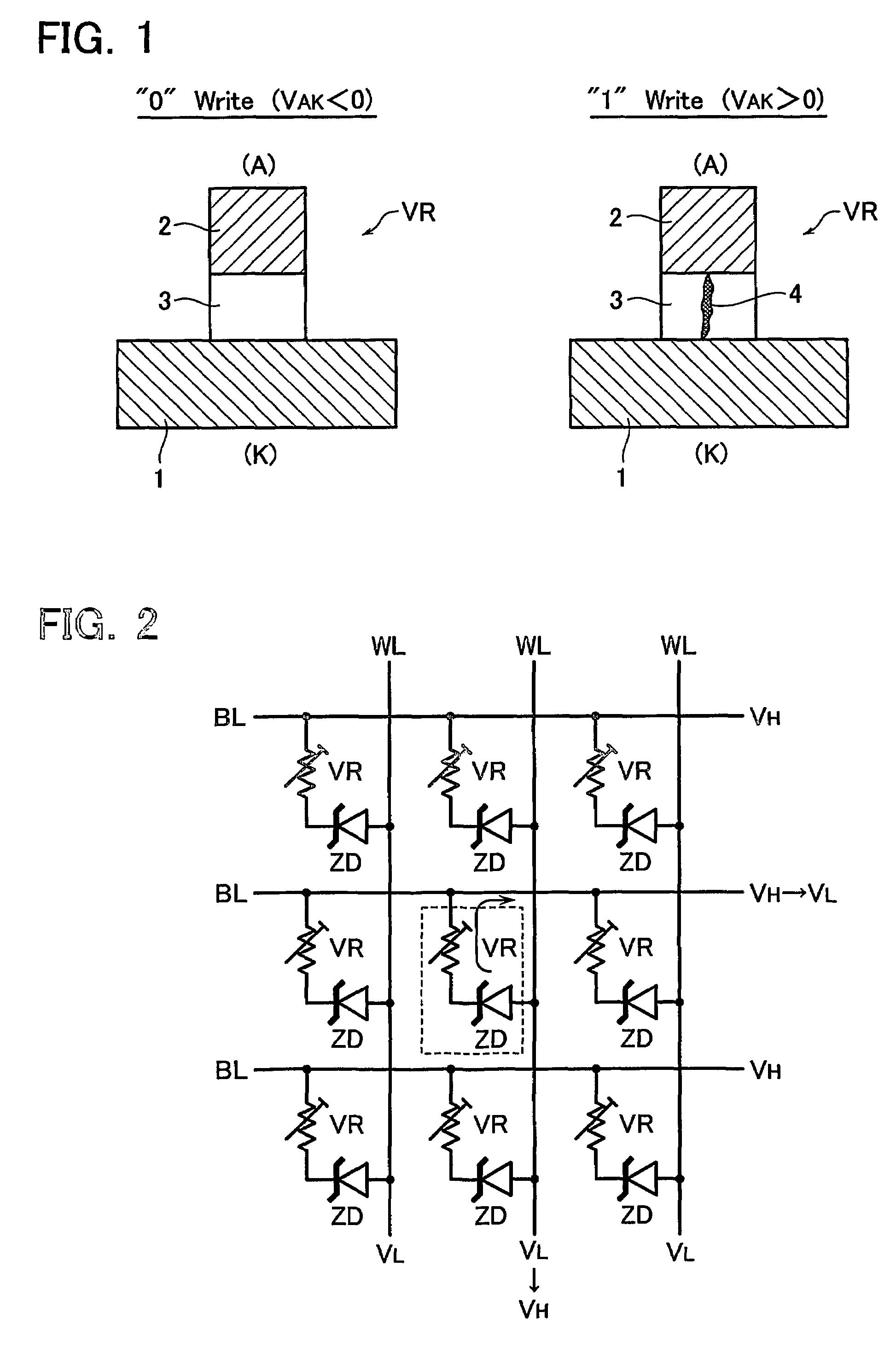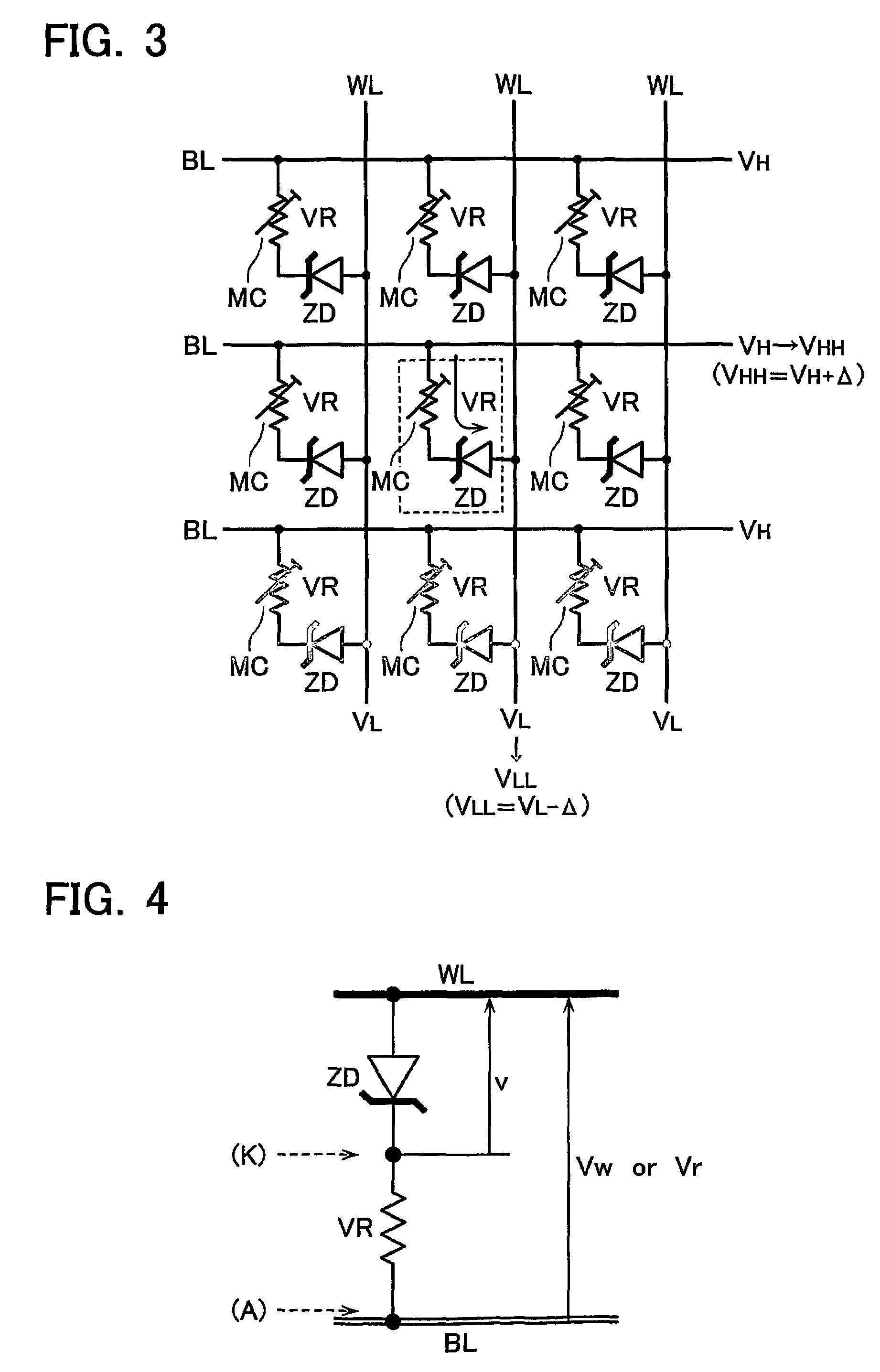Three-dimensional programmable resistance memory device with a read/write circuit stacked under a memory cell array
a memory cell array and read/write circuit technology, applied in semiconductor devices, digital storage, instruments, etc., can solve the problem of not being able to propose a detailed configuration of a cell array and a read/write circui
- Summary
- Abstract
- Description
- Claims
- Application Information
AI Technical Summary
Benefits of technology
Problems solved by technology
Method used
Image
Examples
Embodiment Construction
[0037]FIG. 1 shows a principle configuration of a programmable resistance (variable resistance) VR used in the present invention. The programmable resistance VR is formed of a resistance film 3 serving as a memory material, and cathode and anode electrodes 1 and 2 sandwiching the resistance film 3. The resistance film 3 is, for example, an ion conductor (solid electrolyte) formed of a chalcogenide containing metal ions such as silver, copper and the like. For example, Ge—S, Ge—Se and the like may be used as the chalcogenide. In the case that the resistance film 3 is formed of the above-described chalcogenide, the electrodes 1, 2 are formed containing silver.
[0038]The resistance film 3 stores, for example, a high resistance state as a data “0” and a low resistance state as a data “1”. In this programmable resistance VR, by applying a positive anode-cathode voltage (VAK>0) that is over a threshold value, and a data “1” will be written. By applying a negative anode-cathode voltage (VAK...
PUM
 Login to View More
Login to View More Abstract
Description
Claims
Application Information
 Login to View More
Login to View More - R&D
- Intellectual Property
- Life Sciences
- Materials
- Tech Scout
- Unparalleled Data Quality
- Higher Quality Content
- 60% Fewer Hallucinations
Browse by: Latest US Patents, China's latest patents, Technical Efficacy Thesaurus, Application Domain, Technology Topic, Popular Technical Reports.
© 2025 PatSnap. All rights reserved.Legal|Privacy policy|Modern Slavery Act Transparency Statement|Sitemap|About US| Contact US: help@patsnap.com



